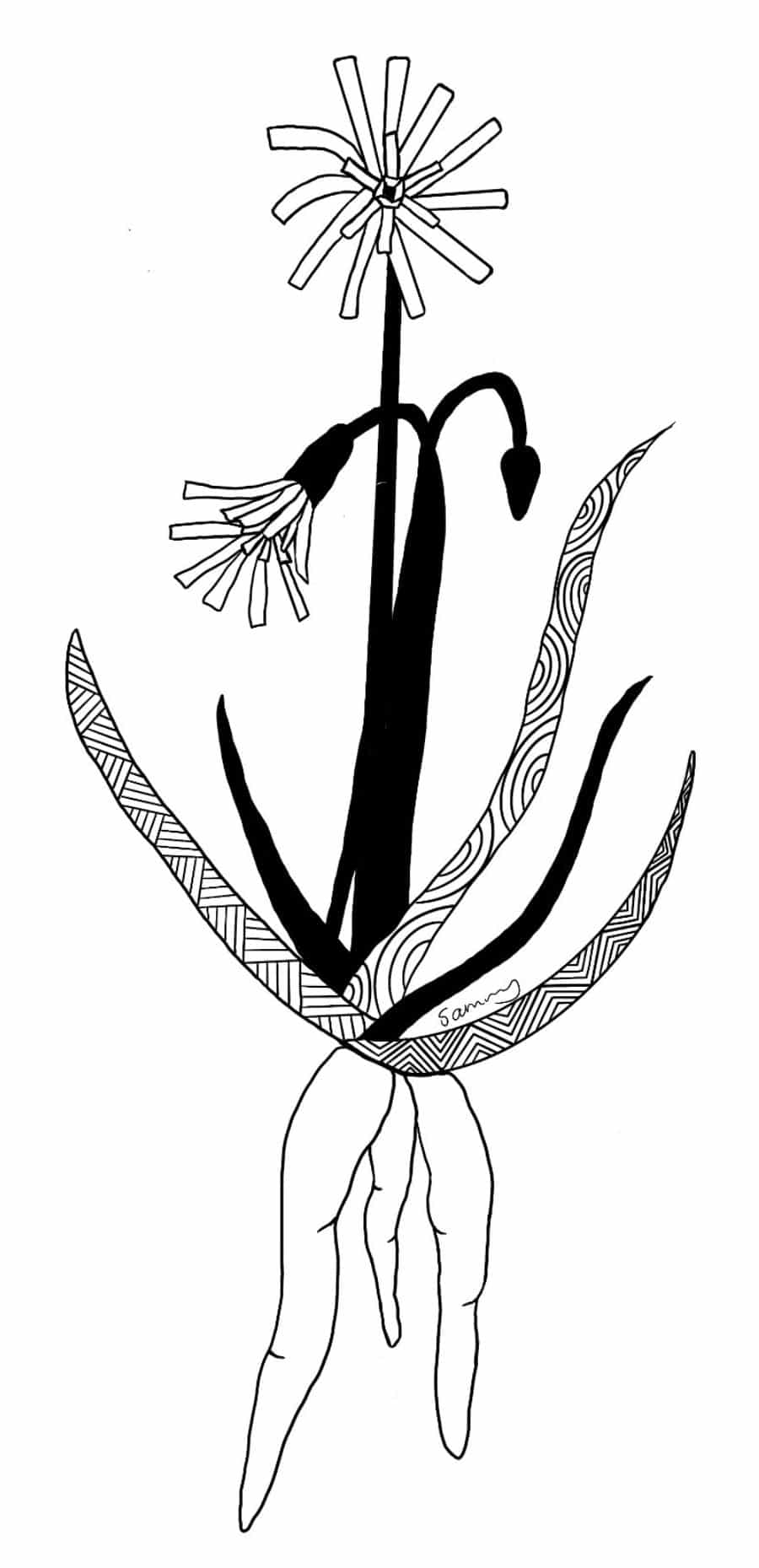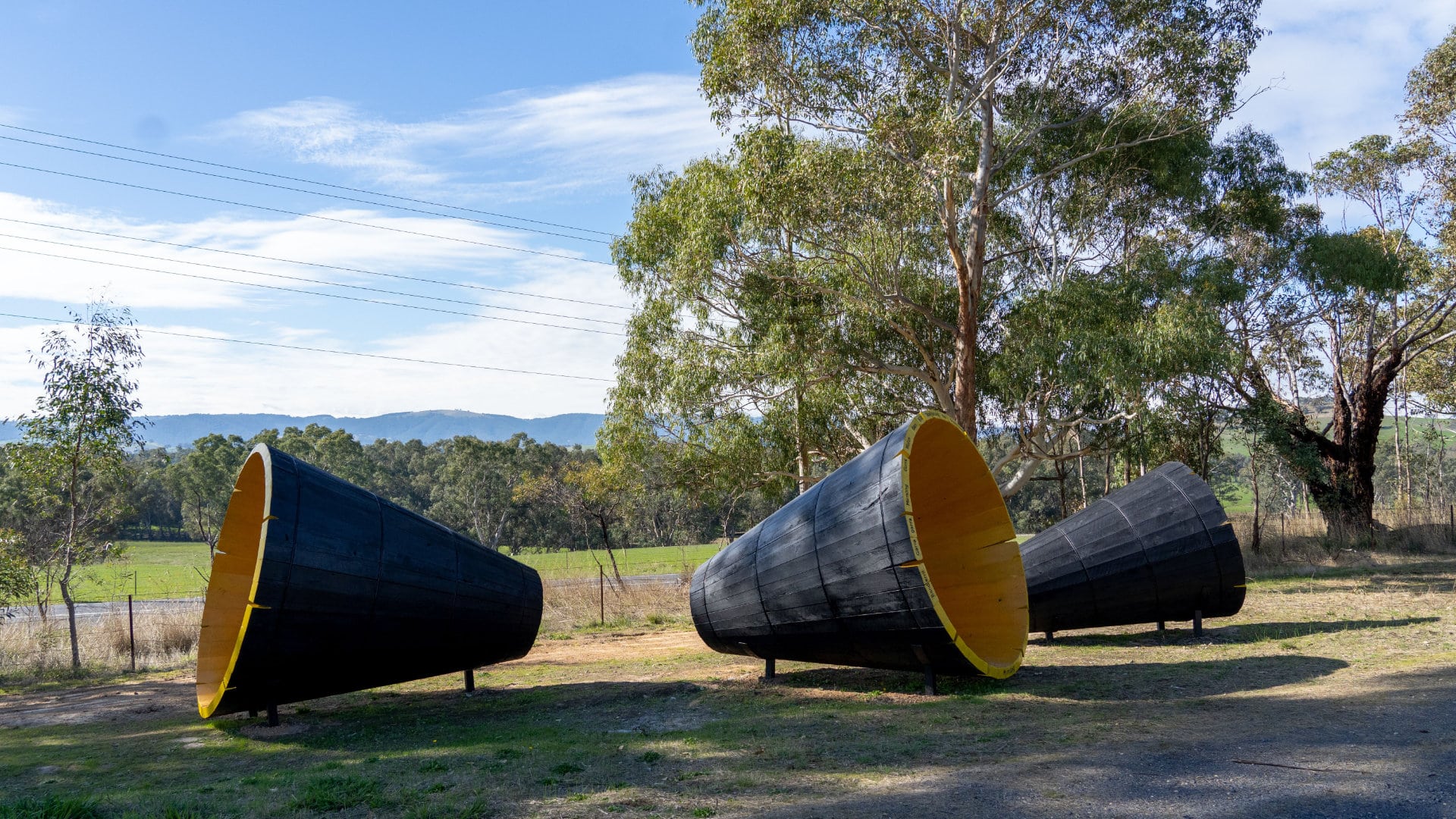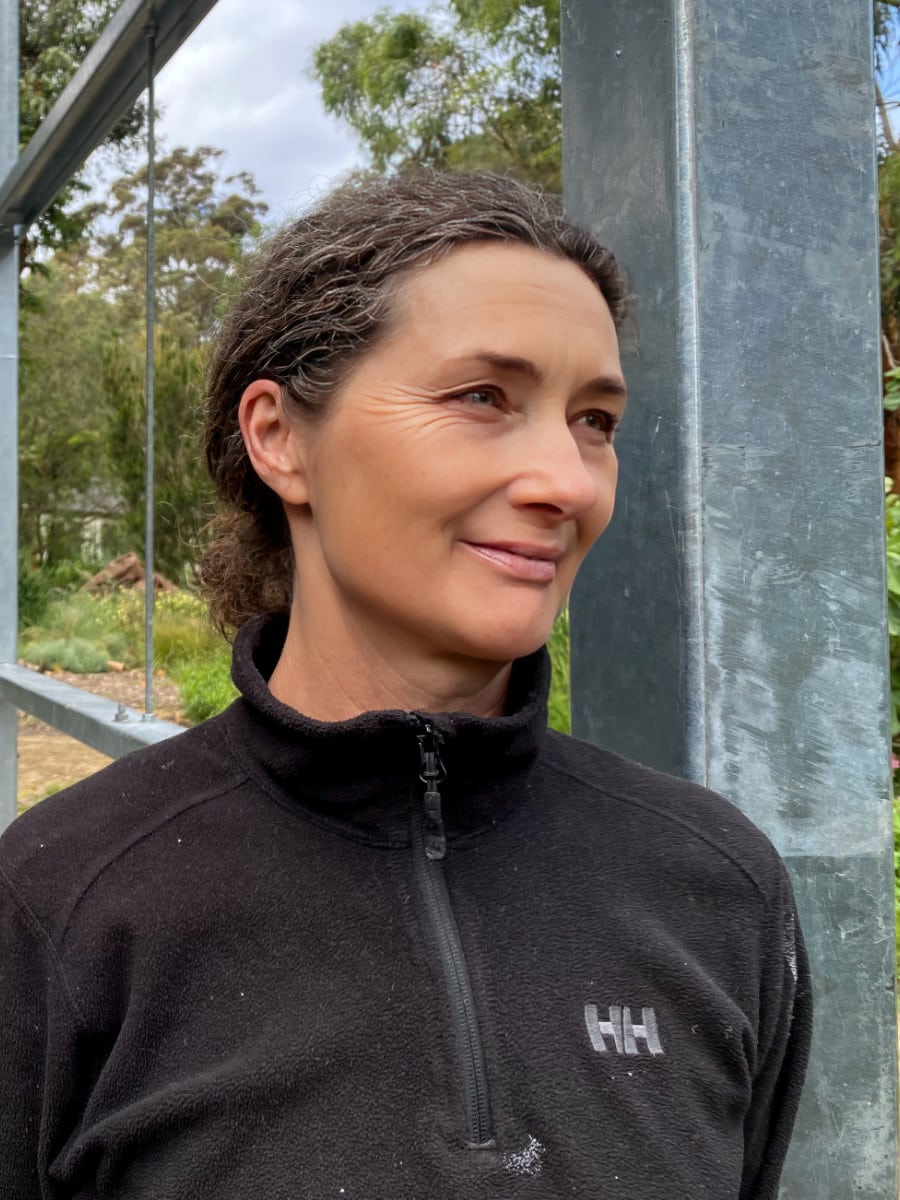Location
Site C | Find it on Google Maps
For thousands of years the Taungurung women used cool fire and aeration of the soil to grow mirnong (Yam Daisy - Microseris Lanceolata). The yam fields were created in the surrounding landscape, the appearance of bright yellow flowers in the spring was a sign that the tubers were ready to harvest.
Each plant had three tubers, the grandmother, the daughter and the granddaughter. The mother was taken to eat while the grandmother was left to nourish the growth of the granddaughter for the following harvest.
The artist imagined the trio of structures acting as carriers for lost stories, knowledge and shared languages. While inhabiting the rich bodily experience the viewer is guided through a telescopic gaze to focus on the hill-slopes, grasslands and cloud movements.
Christabel Wigley would like to acknowledge Taungurung cultural adviser and collaborator Sammy Trist for sharing the Kulin women’s story of the Mirnong.
The use and collection of Yellow ochre on Taungurung Country approved by Taungurung Elders, Aunty Bernadette Franklin and Uncle Larry Walsh.
Special thanks to Andrew, Brian and Jamo from A K Morris Timber - Strath Creek, for their exceptional craftsmanship and delivery of such a challenging project including locally sourced timbers, milled, machined and assembled.
A list of the words in Taungurung language translated into English
Taungurung - English
Mirnong - Yam daisy
Taungurung buk - Taungurung people
Biik - Country
Doormalang - Grandmother
Baban - Mother
Bubup - Baby
Babedirrin - Yellow
Wulun - Digging stick
Banderril - Yellow ocher
Monmut - Wind
Wiinj - Fire
Baan - Water
Wuleli - Yam
Gurrk - Flower
Garra garra - Dragonfly
The Mirnong Story – told by women of the Kulin Nation
For thousands of years the Kulin Women used cool fire and aeration of the soil to grow Mirnong and other useful plants.
The appearance of the bright yellow flowers in spring was as sign the tubers were ready to harvest.
The Women and children used digging sticks to carefully harvest the Mirnong tubers.
Each plant had 3 tubers, the grandmother, the daughter and the granddaughter. Mother was taken to eat while the grandmother was left to nourish the growth of the granddaughter for the following harvest.
Yamfieds were created in the forest clearings, grasslands and woodlands by the careful and deliberate use of fire.
The first record of the use of Mirnong in Victoria is from Geelong area, by the surveyor Wedge in 1835, who noted that it was “a root eaten by the native” and it was recorded as being in the ‘millions’ (Robertson 1840)
The Mirnong was highly nutritious and was a staple food source for the first nations people of Southeastern Australia. The women grew it in vast, well tilled fields. The tubers growing just below the surface, are easy to harvest in large quantities. Traditionally, the yams were often collected in rush baskets that were placed in pit ovens for slow cooking.
Early explorers observed yam daisy fields that stretched to the horizon, but only a few years after colonization these fields had almost completely disappeared due to the introduction of livestock and the abandonment of traditional fire regimes. Sheep compacted the soil and ate the leaves and tubers. Without the fire management, other plants grew. Fertilizers continue to have an adverse effect on the yam daisy.

Illustration of the Mirnong plant. Image credit: Sammy Trist

About the artist
Christabel Wigley

Christabel Wigley spent her early 20s studying the Arts in New York City. An independent studio program at the Whitney museum of American art led her into creating sculpture.
At age 30 she returned to Australia settling in Somers on the Mornington Peninsula. Since returning Wigley’s work has been greatly influenced by the natural environment and strongly influenced by her late father James Wigley who spent time working and painting with the indigenous peoples of North-Western Australia.
Most recently Christabel was awarded a commission by McClelland, ISPT and Karingal Hub to create a public and immersive art piece called Sound Shell representing the origins of the land with a unique soundscape.
Wigley’s earlier works include the distinctively carved vertical forms where she took large cypress trunks and with minimal intervention incised apertures and slits, many can be found at numerous locations on the peninsula.
Learn more about Christabel Wigley:
About the project
Art on the Great Victorian Rail Trail brings walkers and riders on a journey of artistic discovery through beautiful Taungurung Country.
In 2021 Murrindindi, Mitchell and Mansfield Shire Councils were successful in receiving $1.2 million through the Victorian Government’s Regional Tourism Investment Fund to create large-scale art installations along the Great Victorian Rail Trail.
Eight artists were engaged to create seven major art installations and 20 smaller works that have been placed along the length of the trail. You can discover them all here.
